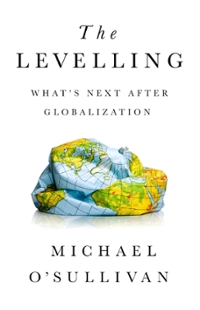Question
1. Fiscal policy refers to _____________________. a. efforts to balance a government's budget b. changes in the money supply to achieve particular economic goals c.
1. Fiscal policy refers to _____________________.
a. efforts to balance a government's budget
b. changes in the money supply to achieve particular economic goals
c. changes in government expenditures and taxation to achieve particular economic
goals
d. the change in private expenditures that occurs as a consequence of changes in
government spending
2. Increased government purchases and tax cuts characterise _____________________.
a. contractionary fiscal policy
b. expansionary fiscal policy
c. expansionary monetary policy
d. deflationary policy
3. Suppose Government increases income taxes. This is an example of ________________.
a. expansionary fiscal policy
b. expansionary monetary policy
c. contractionary fiscal policy
d. contractionary monetary policy
4. Which of the following BNM actions would both increase the money supply?
a. buy bonds and raise the reserve requirement
b. buy bonds and lower the reserve requirement
c. sell bonds and raise the reserve requirement
d. sell bonds and lower the reserve requirement
5. Expansionary fiscal policy actions include __________ government spending and/or
__________ taxes, while contractionary fiscal policy actions include __________
government spending and/or _____________ taxes.
a. increasing; increasing; decreasing; decreasing
b. decreasing; decreasing; increasing; increasing
c. increasing; decreasing; increasing; decreasing
d. increasing; decreasing; decreasing; increasing
6. An increase in the money supply will _________________________________.
a. lower interest rates and lower the equilibrium GDP
b. lower interest rates and increase the equilibrium GDP
c. increase interest rates and increase the equilibrium GDP
d. increase interest rates and lower the equilibrium GDP
7. In which case does the aggregate demand curve shift right?
a. the price level rises, making the interest rate drop
b. the price level falls, making the interest rate drop
c. the money supply increases, making the interest rate drop
d. the money supply decreases, making the interest rate drop
8. Assuming multiplier but no crowding-out or investment-accelerator effects, a RM100
billion increase in government expenditures shifts aggregate
a. demand right by more than RM100 billion.
b. demand right by less than RM100 billion.
c. supply left by more than RM100 billion.
d. supply left by less than RM100 billion.
9. Most economists believe that fiscal policy
a. only affects aggregate demand and not aggregate supply.
b. primarily affects aggregate demand.
c. primarily effects aggregate supply.
d. only affects aggregate supply and not aggregate demand.
10. Economists agree on all of the following EXCEPT that
a. increases in the money supply shift aggregate demand to the right.
b. in the long run, increases in the money supply increase prices, but not output.
c. recessions are associated with decreases in consumption, investment, and
employment.
d. government should use fiscal policy to try to stabilize the economy.
Step by Step Solution
There are 3 Steps involved in it
Step: 1

Get Instant Access to Expert-Tailored Solutions
See step-by-step solutions with expert insights and AI powered tools for academic success
Step: 2

Step: 3

Ace Your Homework with AI
Get the answers you need in no time with our AI-driven, step-by-step assistance
Get Started


